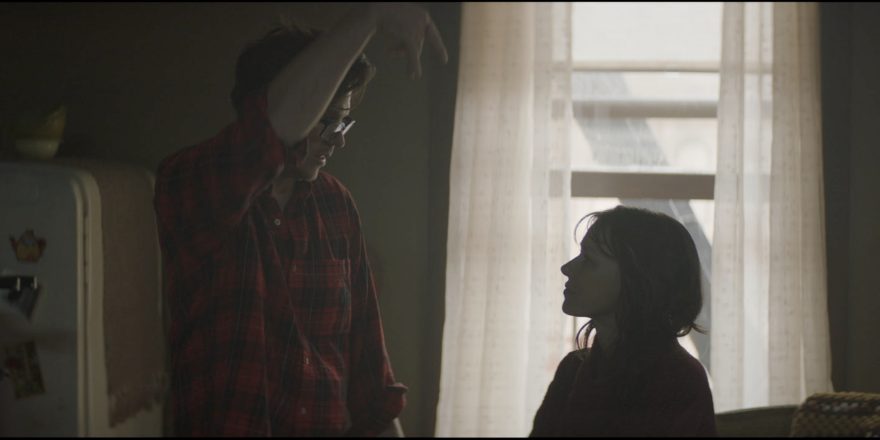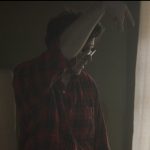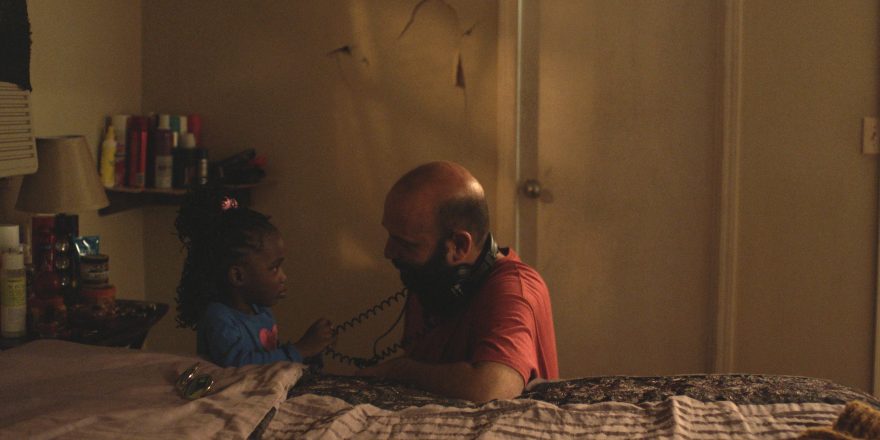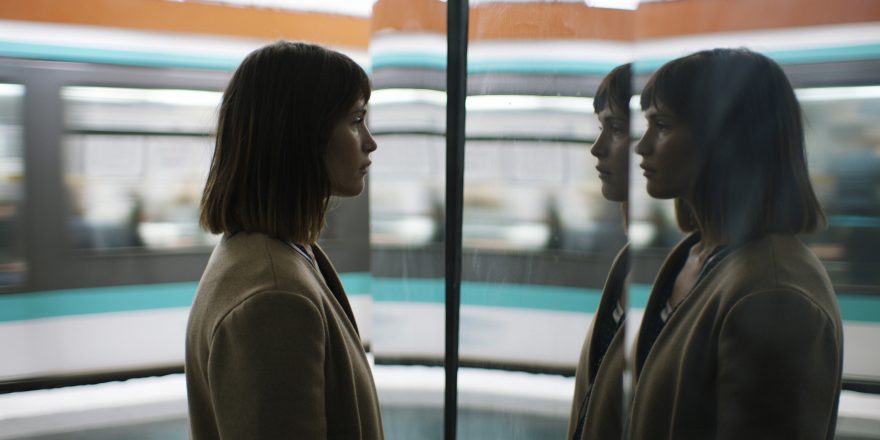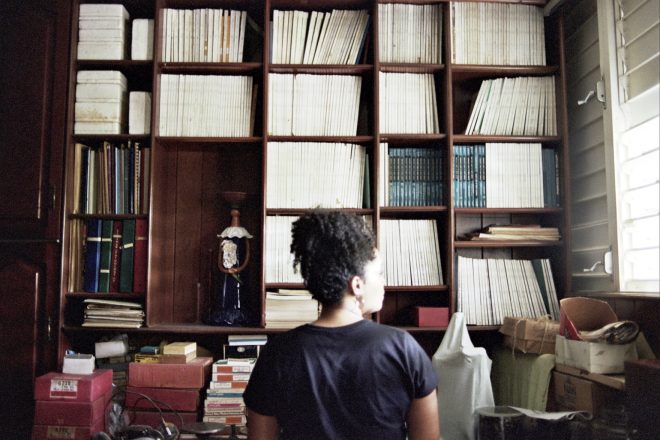Sitting in a dark room alone in a quiet pre-Civil War house, surrounded by a few acres of land and with an aversion to being exposed to the mid-November Hudson Valley winds whistling at the un-caulked corners of my window, I find comfort in the familiarity of this kind of isolation.
It’s been four years since I wrote the screenplay for The Wolf Hour, my movie starring Naomi Watts which is coming out in theaters on December 6, and I’m feeling an explosion of gratitude and relief at seeing it realized and finally being unleashed to the world. The road to finishing any film is long and hard (and fun) and now feels as good a time as any to look back at some of the events that led me to this moment and how an extremely cut-off period of my life led to a spiritual crisis and ultimately a creative breakthrough.
Set near the start of the notorious Summer of Sam in mid-1977, The Wolf Hour is about self-imposed isolation. Naomi Watts plays June Leigh, a once-relevant writer of the late ’60s who’s fallen from grace and has physically and spiritually barricaded herself in a dilapidated South Bronx apartment. When an unseen antagonist begins incessantly ringing her door buzzer, she starts to unravel and further isolate herself from the world.
The Wolf Hour is not an autobiography, but it was specifically inspired by a period of time when I was living in an absurdly tiny fifth-floor tenement apartment in New York’s Chinatown and, for just shy of a year, almost always kept my phone turned off, disconnecting from friends and family. I’d taken too much time off between projects and my struggle to find self-relevance again led me to a period of self-destruction when I perhaps drifted a little too far from shore.
I’d begun my professional creative life when I moved to New York City in the summer of 2001, just four months before 9/11. That day, I watched on TV as the studio I worked in just two blocks from the World Trade Center was partially destroyed as the towers collapsed onto it. I would normally have been in the office that morning, but an emergency trip had me on a flight to Europe instead. The impact of this all was devastating. All the optimism and excitement of moving to the city and starting out my life as an artist was clouded over by the specter of violent death, toxic air, uncertainty and fear. Being creative was now the last thing on my mind. I had thoughts of joining the military, learning jujutsu, finding any outlet for my anger, but that passed, slowly but surely, and I started to channel my emotional response into creative outlets. I went on to write my first feature, Two Gates of Sleep, a film that focused on a fragmented memory from my childhood in Louisiana and Mississippi.
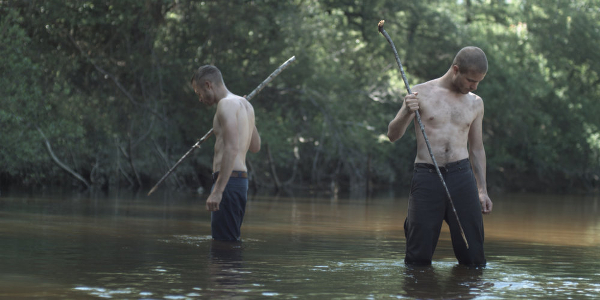
In the leadup to directing Two Gates, another major catastrophe struck. Hurricane Katrina hit just days after I’d left New Orleans, and wiped out virtually all the locations I had written the film for. I was left wondering if perhaps all this destruction was somehow following me, challenging me. It took another three years before the film got made, but it had come at such a high cost – strained and ruined relationships, a second-guessing of every decision, of not having lived up to potential. Essentially, everything an experienced director warns about in the postpartum of a first film.
When Two Gates of Sleep premiered at Cannes (six years after I had started working on the film), something changed: I experienced a moment of real happiness and achievement. But the exuberance and validation was too much, too soon. My head exploded, my ego ran rampant and I drifted away from my creative life for a time. Touring the festival circuit with a film is a trip; meeting professional peers and getting wasted with them in foreign countries, staying in luxury hotels, and crowds of people clamoring to get the first glimpse of what you’ve made. It was all intoxicating, but when it was over, I felt hollowed out. I was broke from not working for over a year and perpetually hungover. The prospect of pulling the car back onto the interstate with an empty tank of gas felt almost Sisyphean.
Through some shady Craigslist hustling, I found the only accommodations I could afford at the time, that tiny Chinatown apartment. I struggled to even fit my small mattress within the confines of its walls and due to the lack of space, I decided to get rid of most of my things. This purge was actually a relief. It felt good being back in NYC, but something was off. I found I didn’t want to speak to anyone. When I did step out to buy groceries, I found solace in the relative anonymity of the alien bustle of Chinatown. At night, screaming voices in Mandarin would come through the walls and the strange smells of boiling fish-head soup and dim sum wafted up to my top-floor perch, where I would sit all night out on the fire escape watching drunken people fighting and crashing into garbage cans way down below. Years had passed since I had written anything meaningful. Again, I found myself uncertain if I should continue forward with my work.
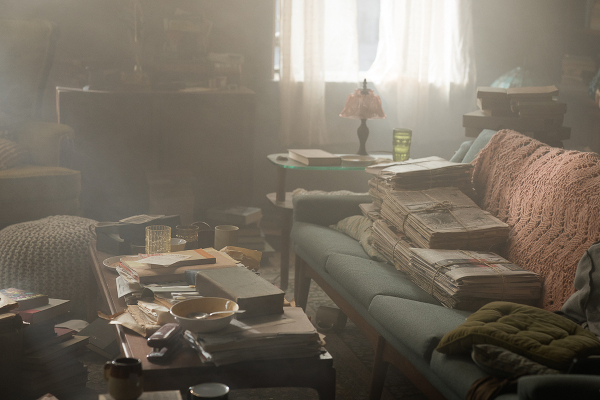
I don’t know when it happened, but an idea suddenly appeared, jotted down in my notebook next to an empty bottle of bourbon. It read: A woman is tormented by unworldly noises through her intercom but can’t leave to check them out. I stared at the practically illegible words, unsure when I had written them. I started to write. It wouldn’t stop coming, page after page, day after day. It just flowed out of me in a way I had never experienced before. Sometimes it’s that simple. A spark. No context, no plan, no narrative. Just a sketch of a thought. I had no intercom or buzzer in this apartment, but this is what was written down in my book. All I could do was lean in and let it take me over.
I began to do some research on shut-ins. I found a story about the Collyer brothers, who over the 1930s had crammed their East Harlem apartment with so much junk that it took police 10 hours to dig them out after neighbors complained of rotting stink. Officers finally found both brothers: Homer Collyer was buried under junk, dead of starvation and heart disease; his brother Langley Collyer was inside a two-foot-wide tunnel made of drawers, bed springs, newspaper and rotting books – a boobytrap meant for intruders had fallen in on him, crushing him to death. I could only think about Homer starving to death, his apartment so thick with junk that if he had been screaming for help I’m certain they would have gone unheard; trapped on a deserted island in the middle of one of the most populous cities in the world.
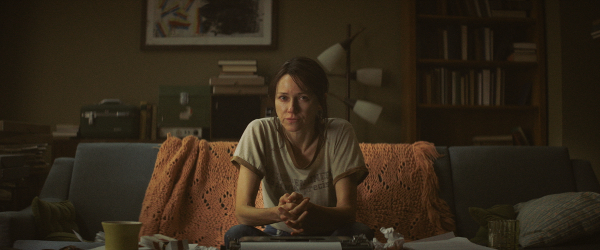
I looked over at my floor; on it were the several books and small desk I had found on the street over the past months and brought up to my tiny room. I shuddered. This was a known pattern, a pathology and I was now in its early stages. When would I start making my own boobytraps? It seemed like just a matter of time. I was nearly finished with a draft of the script, but I quickly started making moves to get out of my apartment. I scraped together what I could and reconnected with friends and family, extremely grateful to find they hadn’t yet given up on me. I found love, got married, moved into a much better apartment, and my movie – The Wolf Hour – got made.
So here I sit alone again at the tail end of another festival run, writing a new script. This time in the woods, surrounded by deer and turkey instead of bustling Gotham. But this time it’s different; I don’t struggle to write anymore, I don’t go for more than a day without reaching out to people. I don’t seek solitude out of fear or alienation, but out of a practical need to work without interruptions, though I do still grab the occasional piece of junk off the street. Ideas come faster now than I can commit them to paper and I can’t help but think that after everything that has come to pass to get to this point, it might just be time to accept that it may get easier from here.
The featured image shows Alistair Banks Griffin directing Naomi Watts on the set of The Wolf Hour.



